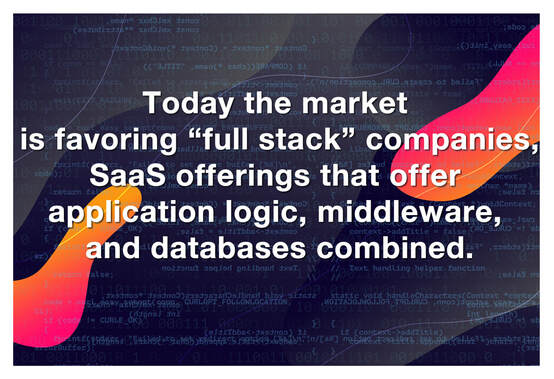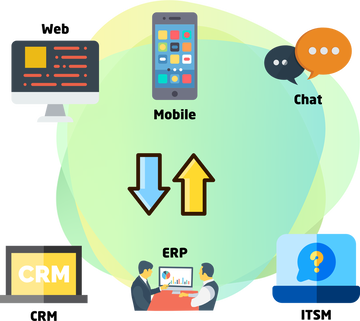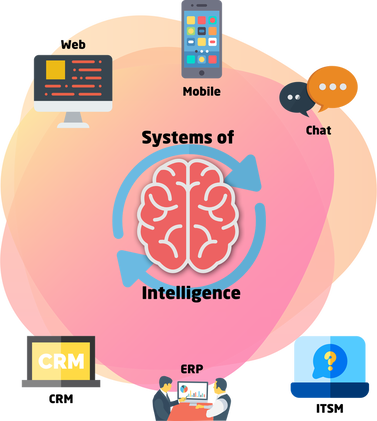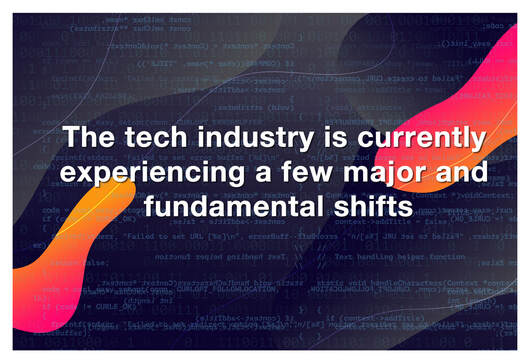|
I did this presentation in June last year at a conference in India and I really wanted to share it so here we go: from code to data, or how users today are training products like we train dogs to perform specific tasks. It’s a long narrative story so I am going to spread it across a few weeks’ posts. (Read The End of Code Part One here) A fundamental platform shift: data network effects As discussed previously, today we are undergoing one of the largest platform shifts in a generation as applications move to the cloud and are consumed on iPhones, Echoes and Teslas, while being built on new stacks and fueled by AI and data. And with it, the way tech companies conduct business is also changing .... and with it the employee skillset necessary for tech companies to stay ahead is also being rapidly disrupted. But before we look at these implications, let’s have a quick look at how the tech business models are evolving from network effects to data network effects by inserting AI-driven systems of intelligence in the current business models. Traditional tech business models To establish themselves as powerhouses companies like google, facebook, amazon, or microsoft all were built on economies of scale and network effects.
Going full stack Today the market is favoring “full stack” companies, i.e. SaaS offerings that offer application logic, middleware, and databases combined. Technology is becoming an invisible component of a complete solution (Example no one cares what database backs your favorite mobile app as long as your food is delivered on time). In the consumer world, Apple made the integrated or full stack experience popular with the iPhone which seamlessly integrated hardware with software. This integrated experience is coming to dominate enterprise software as well. Cloud and SaaS has made it possible to reach customers directly and in a cost-effective manner. As a result, customers are increasingly buying full stack technology in the form of SaaS applications instead of buying individual pieces of the tech stack and building their own apps. Today’s SaaS stack: systems of engagement and systems of record
The new tech business model: data network effects At the core of data network effects are AI-driven systems of intelligence, which typically cross multiple data sets by inserting themselves in between systems of record and systems of engagement. Success is then achieved by using customer and market data to train and improve models that make the product better for all customers, which spins the flywheel of intelligence faster. Ultimately the product becomes tailored for each customer (that’s the “personalization” aspect we talked about in the intro). To be continued! Let me know what you think! DM me @philippemora
My name's phil mora and I blog about the things I love: fitness, hacking work, tech and anything holistic. Head of Product and VP Engineering at Sikka Software. thinker, doer, designer, coder, leader.
0 Comments
I did this presentation in June last year at a conference in India and I really wanted to share it so here we go: from code to data, or how users today are training products like we train dogs to perform specific tasks. It’s a long narrative story so I am going to spread it across a few weeks’ posts. Introduction: 2018 tech trends The tech industry is currently experiencing a few major and fundamental shifts. Let’s start by briefly exploring the macro-view in innovation via 3 major driver trends we see today in order to put all of this in context. One of the first things we want to look at is personalization. With personalization, data improves engagement in experiences and drives growth and scrutiny. We see now that personal collective data provides better experiences for consumers. We’re now at 2.2 billion Facebooks, 200 million Pinterests, 170 million Spotifies and 125 million Netflixes. The value comes both from people who are putting their data into these products to make their experiences better and the collective data of many other users that effect a lot of these products, in real-time, for example with Waze, SnapMap, NextDoor, or Uber Pool. Second, there is data gathering and optimization, which has become increasingly global and competitive and is accelerating. In the past decade, we have lived through two computing Big Bangs dealing with consumer mobiles and the cloud. The cloud started in 2006 with Amazon AWS and in 2007 with the Apple iPhone. The first result has been a collapse in computing costs followed by a similar drastic decrease in storage costs. Meanwhile data gathering, sharing and optimization was enabled by consumer mobile adoption, social media adoption and sensor pervasiveness. The collective amount of user data is now growing at a mind blowing pace, from 2 ZB (a zettabyte is a trillion gigabytes) in 2010 to a projected 46 ZB in 2020. Data today improves the predictive ability of many services (we’ll get to that later) and data volume is foundational to algorithmic refinement in Artificial Intelligence modeling, performance, predictability and capability. It’s rapidly becoming foundational to tool and product improvement. And lastly – lifelong learning is becoming absolutely crucial in the evolving work environment, and luckily the tools are getting better and more accessible. Coursera has 33 million learners, up 30 percent year on year, with top courses such as machine learning, neural networks and deep learning, introduction to mathematical thinking, algorithms, and neural networks. Lifelong learning educational content usage is also ramping very fast. YouTube has more than a billion views of daily learning videos, 70 percent of users use the platform to help solve work, school or hobby problems. As a result of those macro-trends we see in tech today, two things come to mind: the way tech companies are conducting business as well as the skills necessary to achieve success are changing rapidly - which does have a direct impact on any organization and employee pool (much like ours, but the good news is that the ways to acquire knowledge today are becoming virtually free). We’re going to first have a look at the micro-economics of the equation, in other words how the business models are changing in the tech industry and the impact, or how we are as a startup, responding to the shift. Second, we will look at the changes in how tech products are built and the skills required today and in the future to build them. To be continued! Let me know what you think! DM me @philippemora
My name's phil mora and I blog about the things I love: fitness, hacking work, tech and anything holistic. Head of Product and VP Engineering at Sikka Software thinker, doer, designer, coder, leader. 2019 is g oing to b e aweso melici ous! Let me know what you think! DM me @philippemora
My name's phil mora and I blog about the things I love: fitness, hacking work, tech and anything holistic. Head of Product and VP Engineering at Sikka Software. thinker, doer, designer, coder, leader. |
Head of Product in Colorado. travel 🚀 work 🌵 weights 🍔 music 💪🏻 rocky mountains, tech and dogs 🐾Categories
All
|






 RSS Feed
RSS Feed